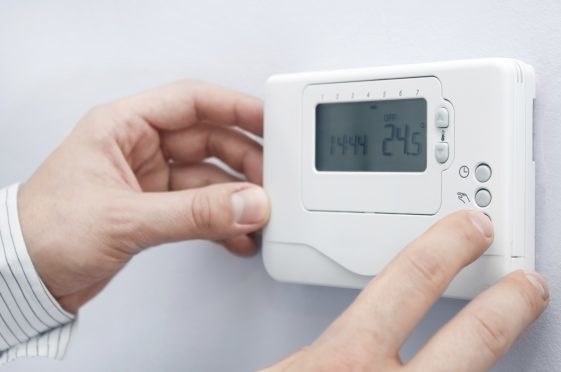It’s thought that as many as 11million Brits are guilty of overheating their home this winter to make it as balmy as Barcelona (above 21 degrees).
This will add a whopping £1.4billion to energy bills, according to research from uSwitch. A recent report also found that more than half us mistakenly believe that turning up the thermostat to above the desired temperature is a way to heat a home quicker. But it’s inefficient and wastes money; turning up the dial by just one degree can increase energy bills by 10%.
Tom Lyon, energy expert at uSwitch, says: “It might be tempting to crank up the thermostat and overheat your home to combat the cold, but it’s unnecessarily adding millions to already exorbitant energy bills. There are simple measures that consumers can take this winter to keep warm while using less, wasting less and paying less for energy.
“Using, or installing, a timer to control your heating is a good way to match the temperature with your schedule at home; for example, programming it for when you’re coming back from work, or getting up in the morning. Now is also a good opportunity to consider switching to a cheaper energy deal. This takes a matter of minutes and could cut annual bills by as much as £300.”
Here are Tom’s top tips for avoiding overheating your home…
- TURN IT DOWN
You may think twice about cranking up the thermostat knowing that adding just one degree can cost you up to £60 extra a year. It may be difficult to turn the heating off completely, especially as temperatures are dropping right now, so try and turn it down to a low, constant temperature to save money. Turn it down, layer up and see the savings roll in.
2. SEAL UP DRAUGHTS
British homes can be very draughty, and even more heat is lost during the current windy weather, so be sure to draught-proof your home. According to the Energy Saving Trust, this can save you up to £50 on your annual heating bill, so be sure to keep an eye on the letterbox and any draughty spots under doors.
3. WHAT A LEDGE
A shelf just above a radiator helps to throw heat forward from the radiator into the room, rather than letting it rise to the ceiling. You can buy purpose-made radiator shelves, which clip easily on to most radiators.
4. REFLECT AND PROTECT
Radiator reflector panels can stop heat being wasted from the back of a radiator into an external wall. They are especially useful in older homes where the walls are solid, which rules out the option of cavity wall insulation. You can buy radiator reflector panels or radiator foil, or you can make your own by cutting a piece of cardboard to size and covering it in the type of aluminum foil you use for cooking. You’ll need a long stick and double-sided tape to attach them to the wall behind the radiator.
5. CHECK THE CHIMNEY
If you have open chimneys, a chimney balloon is a worthwhile buy. This blocks the cold air that falls down a chimney, as well as preventing internal warm air from being drawn up the chimney, when it’s not in use. The balloon can be deflated and taken out of the fireplace as and when you need to use it. If you are looking for a more permanent solution, and don’t have plans to use your fireplace at all, it is best to get a qualified tradesman to cap the chimney at the top and shut it off at the bottom, as this will be more energy-efficient.
